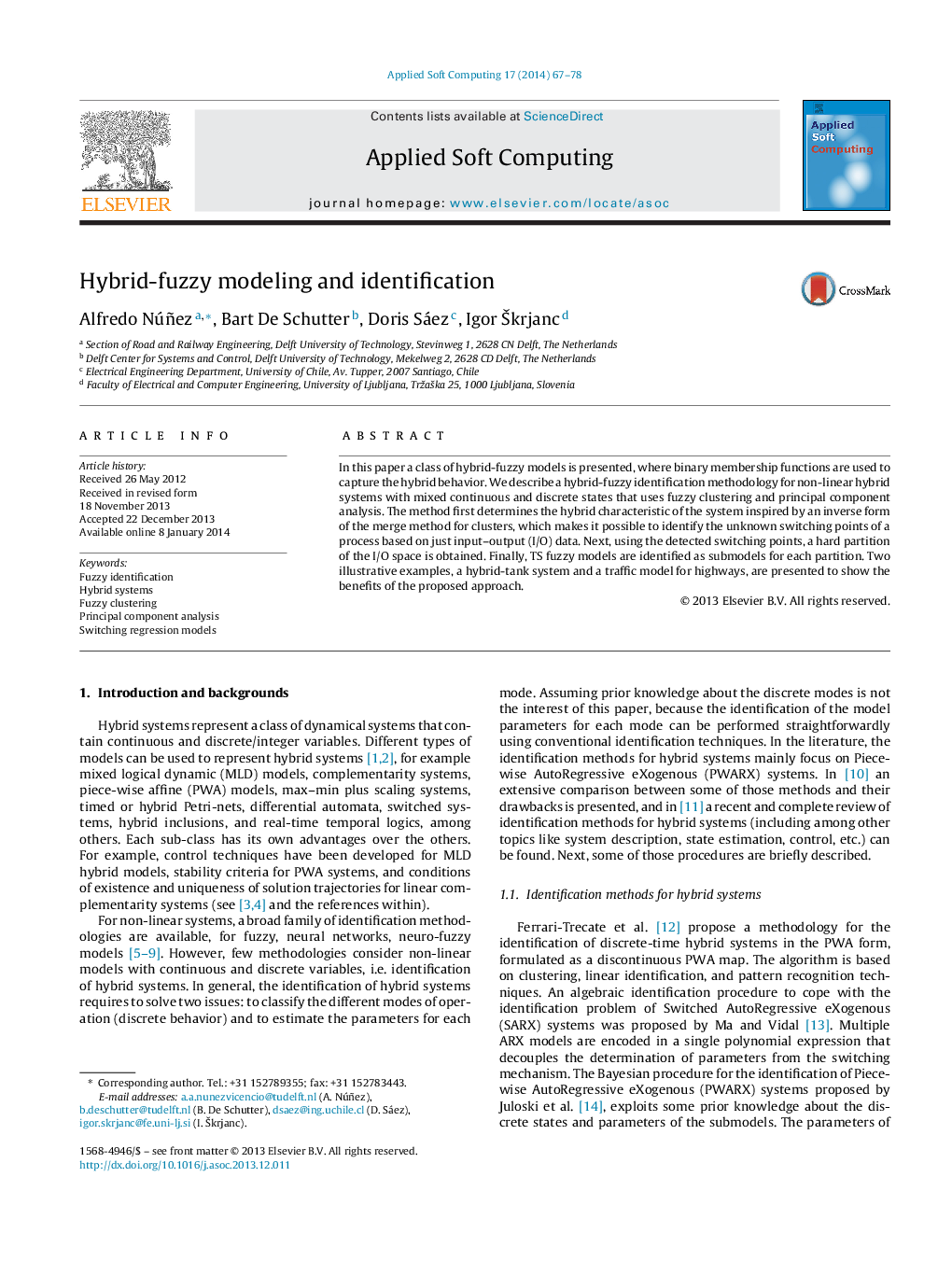| Article ID | Journal | Published Year | Pages | File Type |
|---|---|---|---|---|
| 495653 | Applied Soft Computing | 2014 | 12 Pages |
•A survey on identification of both hybrid systems and hybrid-fuzzy systems is presented.•The definition of the identification problem of the class of hybrid-fuzzy models considered in the paper.•A hierarchical methodology based on the same principles of conventional Takagi–Sugeno identification (principal components and fuzzy clustering), that first determines the hybrid behavior of the system and then all the other non-linearities.•Two examples, one more academic one, and based on real data measured from a traffic process.
In this paper a class of hybrid-fuzzy models is presented, where binary membership functions are used to capture the hybrid behavior. We describe a hybrid-fuzzy identification methodology for non-linear hybrid systems with mixed continuous and discrete states that uses fuzzy clustering and principal component analysis. The method first determines the hybrid characteristic of the system inspired by an inverse form of the merge method for clusters, which makes it possible to identify the unknown switching points of a process based on just input–output (I/O) data. Next, using the detected switching points, a hard partition of the I/O space is obtained. Finally, TS fuzzy models are identified as submodels for each partition. Two illustrative examples, a hybrid-tank system and a traffic model for highways, are presented to show the benefits of the proposed approach.
Graphical abstractFigure optionsDownload full-size imageDownload as PowerPoint slide
